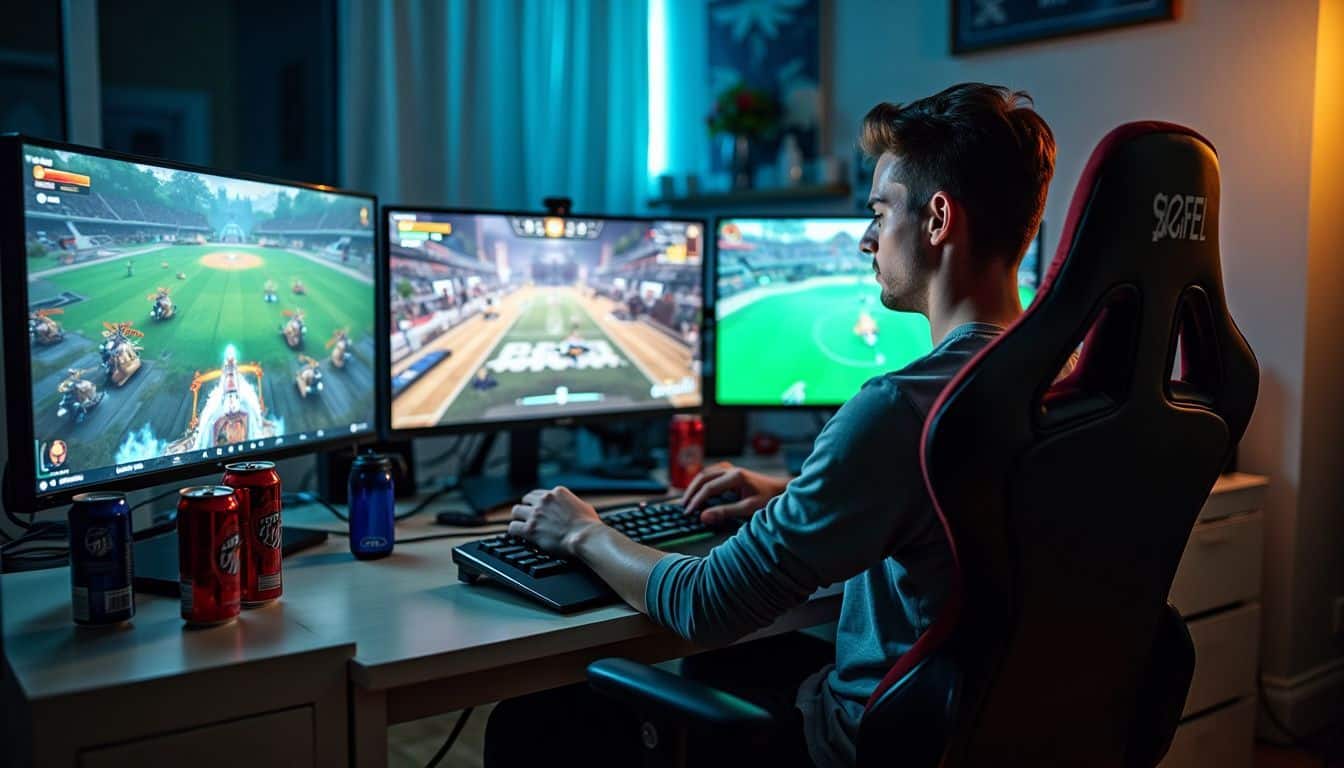Are you confused about esports vs traditional sports? You’re not alone. Esports has grown so fast, it’s now challenging traditional sports for viewers. This blog will break down seven trends changing the game.
We’ll explore how esports and traditional sports are shaping the future of athletics. Ready for a wild ride?
Key Takeaways
Esports viewership is growing fast, with 250 million viewers worldwide in 2020. It’s set to beat most U.S. pro sports leagues in viewers, except the NFL.
Traditional sports still draw huge crowds. The NFL leads with 141 million U.S. viewers, followed by MLB with 79 million and NBA with 63 million.
Esports and traditional sports share similar competition structures, from pro leagues to youth leagues. Both use tech to engage fans through live streaming and social media.
Esports is more inclusive than traditional sports. It doesn’t need special physical skills, allowing people with disabilities to compete on equal footing.
Traditional sports remain cultural icons, teaching values like teamwork and fair play. Sports stars often become role models who influence society.
Table of Contents
Understanding Esports and Traditional Sports

Esports and traditional sports are like apples and oranges – both fruit, but oh so different! Esports, the new kid on the block, pits gamers against each other in virtual arenas.
Meanwhile, traditional sports keep us sweating it out on real fields and courts.
Defining Esports
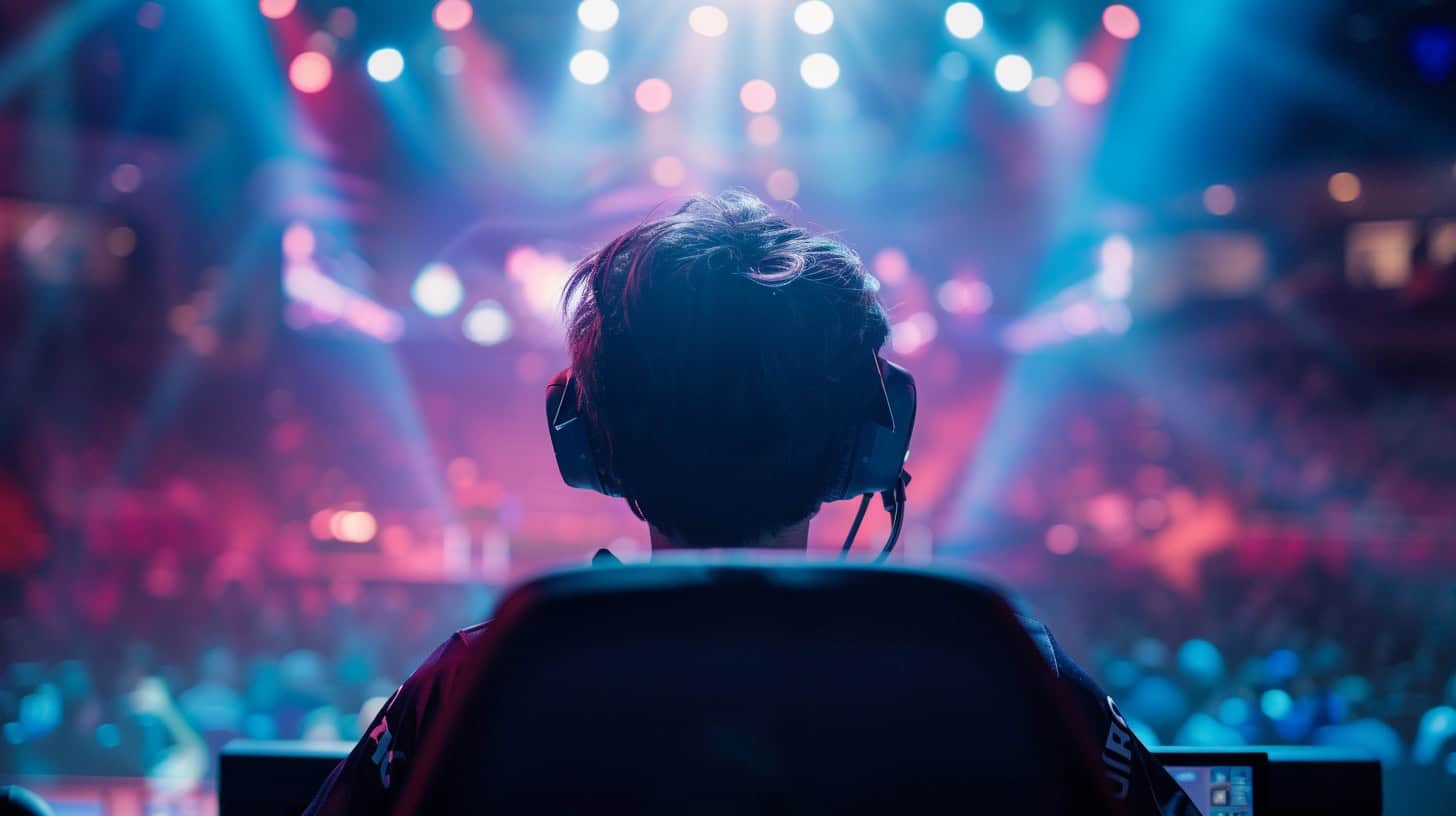
Esports are digital games played competitively. They’re like virtual sports leagues, but with video games instead of balls or rackets. Players face off in popular titles like League of Legends, Fortnite, and Dota 2.
These matches draw huge crowds – both online and in person. By 2020, people watched about 3 billion hours of esports.
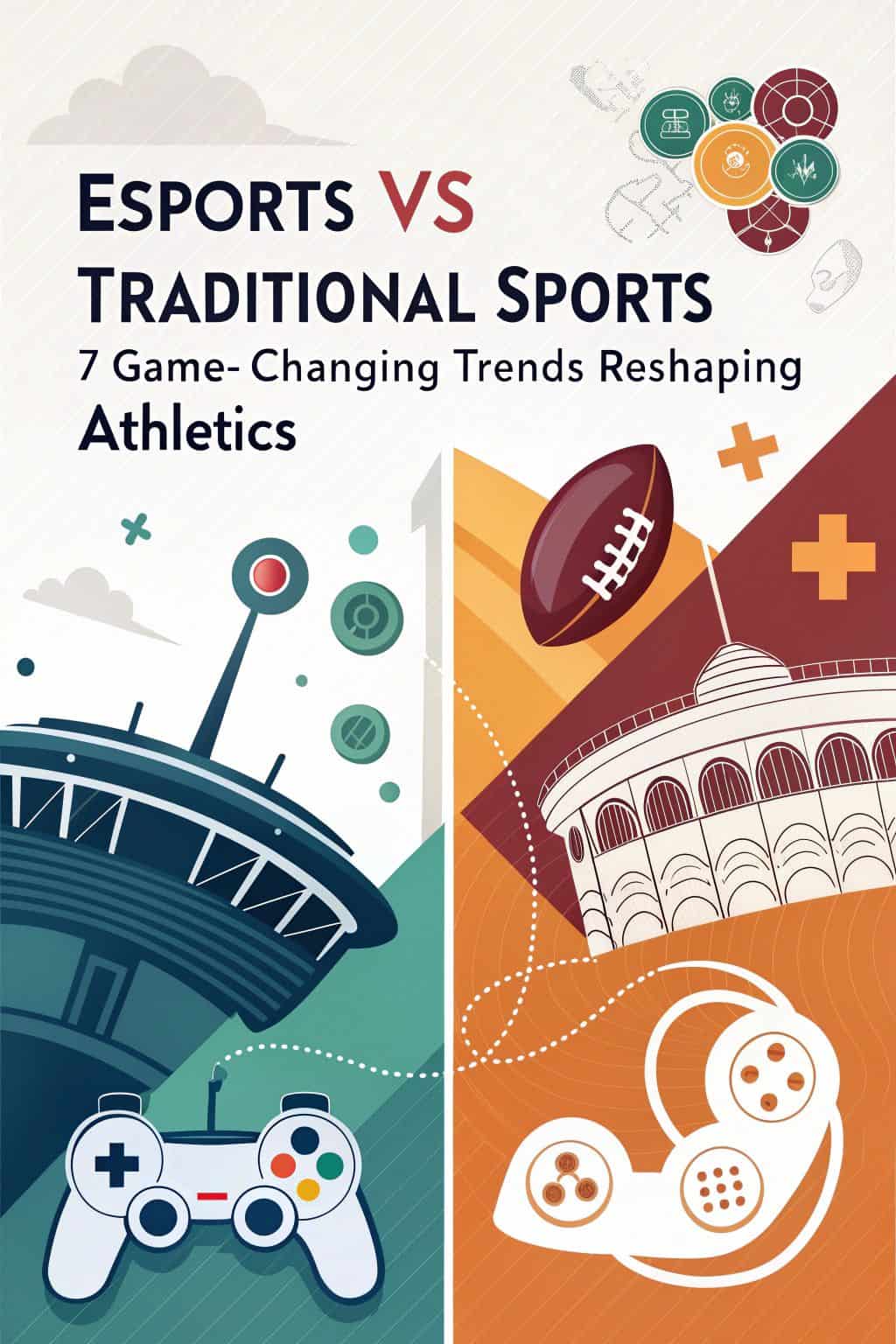
The esports world is growing fast. In 2016, there were 270 million fans. Experts think this number will hit 495 million by 2020. That’s a lot of growth in just four years! As more people tune in, esports are becoming a big deal in entertainment.
Next, let’s look at how traditional sports stack up against this digital newcomer.
Esports aren’t just games – they’re the future of competitive entertainment. – Tyler Ninja Blevins
Exploring Traditional Sports
Moving from digital competitions, let’s jump into traditional sports. These are the games we’ve grown up watching and playing – football, basketball, soccer, and baseball. They’re the classics that fill stadiums and TV screens worldwide.
Traditional sports are all about physical prowess and teamwork. Players sweat it out on fields, courts, or tracks. They need strength, speed, and stamina. But it’s not just about muscles.
These sports also build character. They teach discipline, leadership, and how to bounce back from losses. Many schools use sports to help kids grow. They often tie sports to grades, pushing athletes to excel in class too.
It’s a mix of body and brain power. As we compare these two areas, it’s interesting to note how betting has changed. The 1Bet betting platform offers options for traditional sports, showing how these two areas are coming together in surprising ways.
Comparing Viewership and Revenue
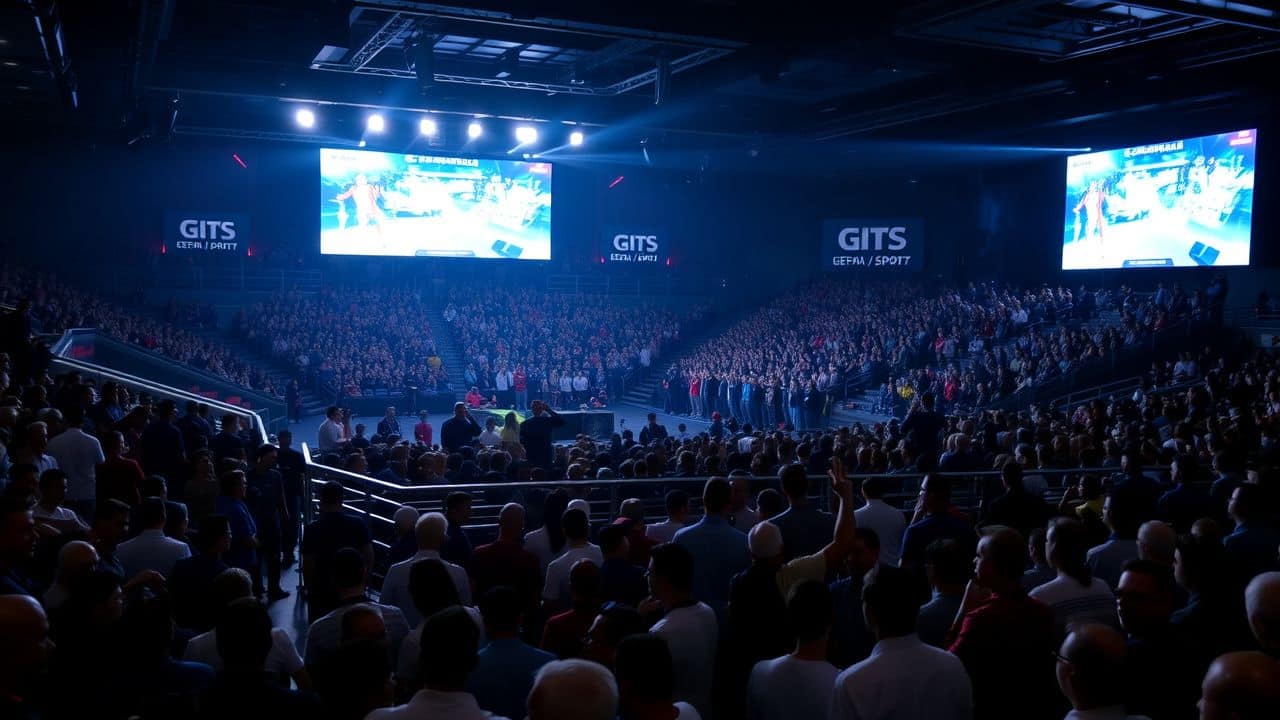
Esports viewership is skyrocketing – and so is the cash flow. Traditional sports still pack stadiums, but online gaming’s pulling in mega-bucks too… and it’s catching up fast.
Growth in Esports Viewership
 Esports viewership is skyrocketing. In 2020, it hit 250 million viewers worldwide. That’s huge! By 2021, it was set to beat most U.S. pro sports leagues in viewers. Only the NFL stayed ahead.
Esports viewership is skyrocketing. In 2020, it hit 250 million viewers worldwide. That’s huge! By 2021, it was set to beat most U.S. pro sports leagues in viewers. Only the NFL stayed ahead.
League of Legends is crushing it. Their 2021 World Championship pulled in a whopping 74 million peak viewers. That’s like filling a thousand stadiums!
Other games are also breaking records. CS:GO tournaments are drawing millions. The PGL Major Stockholm 2021 hit 2.7 million viewers at its peak. That’s a lot of eyeballs! Twitch and YouTube are buzzing with live streams.
Fans can’t get enough of watching their favorite players duke it out online.
Esports isn’t just growing… it’s exploding! – Tyler Ninja Blevins
Audience Metrics for Traditional Sports

Traditional sports still draw huge crowds. The NFL leads the pack with a whopping 141 million U.S. viewers. That’s no small potatoes! Baseball and basketball aren’t far behind. MLB pulls in 79 million fans, while the NBA scores 63 million viewers.
These numbers show that classic sports remain a big hit.
But here’s the kicker – esports are catching up fast. By 2020, over 70 million people were expected to watch an esports final. That’s more than MLB, NHL, and NBA finals! It’s clear that both old-school and digital sports have loyal fan bases.
The playing field is leveling, and it’s exciting to see how both types of sports keep fans glued to their screens.
Similarities in Competition and Engagement
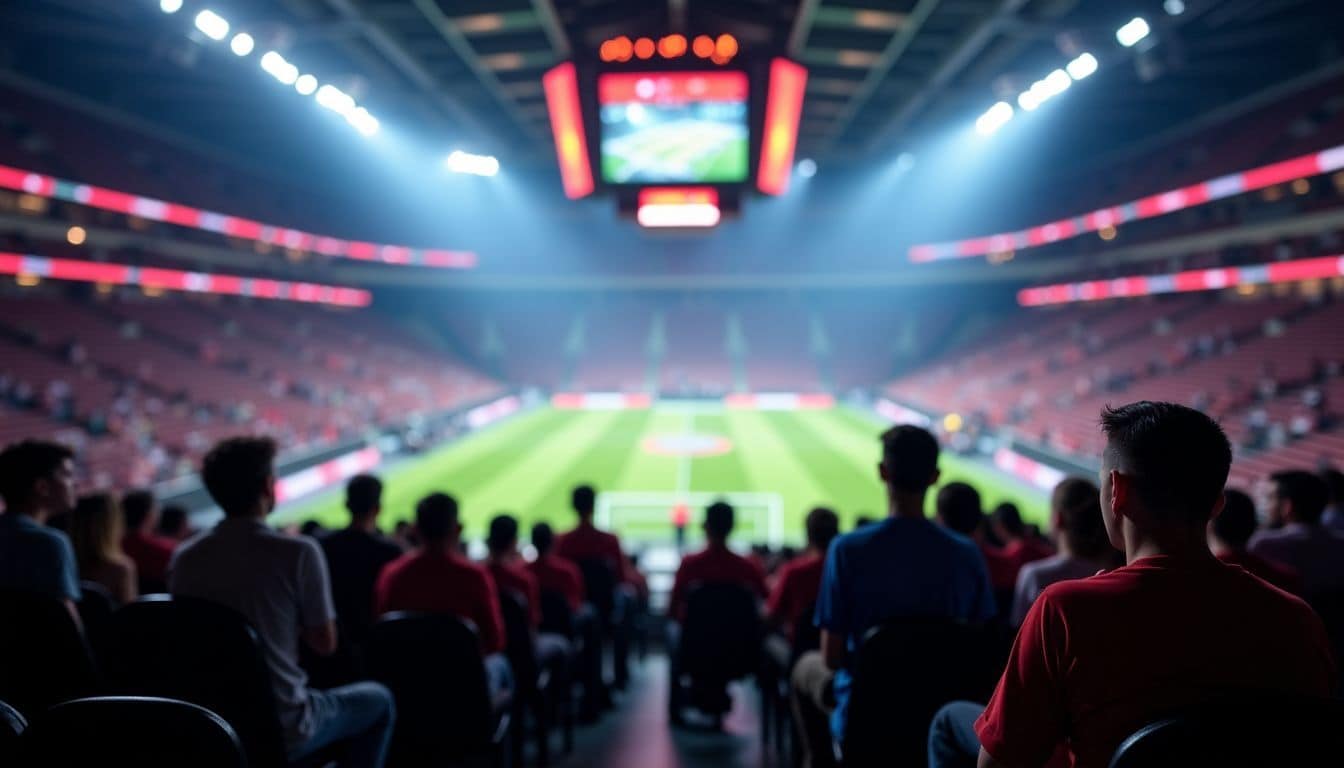
Esports and traditional sports share more than you’d think. Both have nail-biting tournaments and die-hard fans who live for the thrill of the game. From Twitch streamers to basketball teams, pros in both worlds need grit, skill, and a dash of luck to make it big.
Structure of Competitions
Esports competitions follow a tiered system, much like traditional sports. Pro leagues sit at the top, with semi-pro and youth leagues below. For example, “Dota 2” has The International – a mega event with a $25.5 million prize pool in 2018.
That’s some serious cash! Below that, you’ll find regional tournaments and local events for up-and-comers.
These setups mirror classic sports structures. The NBA 2K League, a partnership between the NBA and Take-Two Interactive, shows how traditional sports are jumping into the digital arena.
Esports isn’t just about playing games. It’s a whole ecosystem of competition, from grassroots to the big leagues.
It’s not just about playing anymore – it’s about building a career path for gamers. From casual matches to pro-level face-offs, esports is creating a full spectrum of competitive gaming.
Engaging Fans in Sports

Sports fans crave excitement and connection. Teams and leagues use cool tech to keep them hooked. Live streaming lets fans watch games from anywhere. Social media brings players closer to their followers.
Fantasy leagues make fans feel like they’re part of the action. The Arlington Esports Arena hosts big events that draw huge crowds.
These tech-savvy ways to engage fans work for both esports and traditional sports.
Fan engagement isn’t just about watching games anymore. It’s about being part of a community. Esports tournaments attract millions of viewers online. Traditional sports are catching up with digital platforms.
Virtual reality could soon put fans right in the middle of the action. As engagement grows, so does the money. The global esports audience hit 495 million in 2020. That’s a lot of eyeballs! Next up, let’s look at how pro paths in esports compare to traditional sports.
Professional Paths in Esports and Sports
Esports and traditional sports offer exciting career paths for skilled players. Both fields have unique opportunities and challenges for those aiming to go pro.
- College scholarships: Over $9 million in esports scholarships were given out by December 2017. 110 schools belong to the National Association of Collegiate Esports.
- Pro leagues: Esports has leagues like Overwatch League, while traditional sports have NBA, NFL, etc. Both offer salaries, fame, and intense competition.
- Training regimens: Pro gamers practice 12–14 hours daily, often using anti-cheat software. Athletes train physically, focusing on strength and endurance.
- Skill development: Esports pros hone reflexes, strategy, and teamwork. Traditional athletes work on sport-specific skills and physical fitness.
- Career length: Esports careers can be short due to quick reflexes needed. Traditional sports careers may last longer but risk physical injuries.
- Endorsements: Top esports players like Tyler “Ninja” Blevins earn millions from streaming and ads. Athletes score deals with sports brands and appear in commercials.
- Post-career options: Ex-pros in both fields can become coaches, analysts, or commentators. Some leverage their fame for business ventures or charity work.
- Mental toughness: Both esports and traditional sports demand high-stress tolerance. Pros must perform under pressure and handle public scrutiny.
Key Differences Impacting Accessibility and Technology

Esports and traditional sports differ big time in how easy they are to join. Tech plays a huge role in esports – it’s like the air they breathe! This gap shapes who can play and how they train.
Access and Inclusivity in Esports vs. Sports
Esports opens doors for many people. Unlike traditional sports, it doesn’t need special physical skills. Anyone can join, no matter their body type or ability. This makes esports more inclusive.
Players with disabilities can compete on equal footing. They use special tools like adaptive controllers to play.
Traditional sports often have barriers. They need specific physical traits or abilities. This can leave some people out. But esports levels the playing field. It focuses on mental skills and quick thinking.
Players from all walks of life can shine here. This wider access helps esports grow fast. It’s creating new paths for folks who love competition but may not fit the usual athlete mold.
Training and Practice Variations
Esports players and traditional athletes train differently. Gamers focus on hand-eye coordination and quick thinking. They spend hours in front of screens, mastering game mechanics.
Traditional athletes, on the other hand, hit the gym and practice fields. They build physical strength and endurance. Both groups put in long hours to get better at their craft.
Practice methods vary too. Esports pros use special tools like Streamlabs to analyze their gameplay. They watch replays and learn from mistakes. Athletes often have coaches who guide their training.
They use equipment like weights or balls to improve skills. Despite these differences, both groups show amazing dedication. They work hard to be the best in their fields.
Technology Use in Esports
Moving from practice to play, tech takes center stage in esports. Gamers rely on cutting-edge gear to stay competitive. High-refresh monitors, responsive mice, and low-latency keyboards are must-haves.
These tools help players react faster and move with precision.
Software plays a big role too. Game analytics track player stats and team performance. Streaming platforms like Twitch let fans watch live matches. In 2018, streaming brought in $10.1 billion.
That’s a lot of cash! Tech shapes how esports evolve, from gameplay tweaks to rule changes. It’s a digital playground where innovation never stops.
In esports, your hardware is your uniform, and your software is your playbook.
Cultural Influence and Recognition

Esports and traditional sports are battling it out for cultural dominance. Twitch stars like Tyler “Ninja” Blevins are becoming household names. Meanwhile, classic sports icons still hold sway.
Who’ll win the hearts and minds of fans? Keep reading to find out!
Esports Presence in Mainstream Media
Esports has stormed into mainstream media like a digital tsunami. ESPN, a sports giant, put Tyler “Ninja” Blevins on their magazine cover. This move shocked many but showed esports’ growing clout.
Ninja’s not just any gamer – he’s a star. His stream with Drake pulled in over 635,000 viewers. That’s more than some TV shows!
Twitch, the go-to platform for esports, is now a big deal. Amazon bought it for nearly $1 billion in 2014. That’s serious cash for a site where people watch others play video games.
But it’s paid off. Twitch is now the king of esports streaming. It’s where fans flock to see their favorite gamers in action. The line between “real” sports and esports is blurring fast.
Traditional Sports as Cultural Icons
Traditional sports have deep roots in our society. They shape how we think and act. Take football, for example. It’s not just a game – it’s part of our culture. Millions gather to watch the Super Bowl each year.
It’s like a national holiday. Traditional sports also teach values. Things like teamwork, fair play, and never giving up.
These ideas spill over into everyday life.
Sports stars become role models for kids. Their actions on and off the field matter. Think of how Jackie Robinson changed baseball – and society. Or how Muhammad Ali stood up for his beliefs.
These athletes do more than play games. They help move our culture forward. That’s why traditional sports still hold such a special place in our hearts.
Future Directions and Sustainability
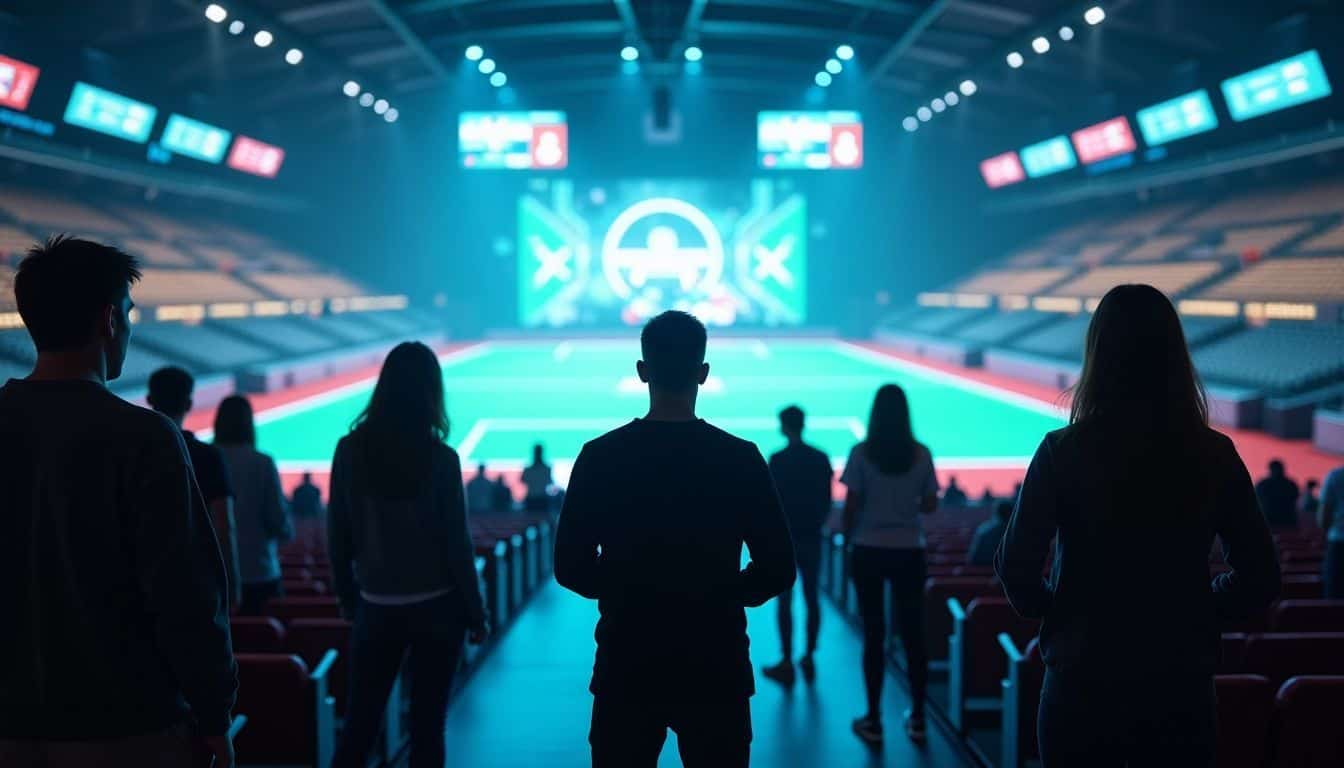
Esports and traditional sports are racing to stay fresh. Both are cooking up new ways to grab fans and cash. Wanna know more? Keep reading!
Innovations Driving Esports Forward
Esports is changing fast. Game makers are creating new ways to play and watch. Mobile gaming is a big deal now. It’s growing fast, with lots of money going into tournaments. This means more people can join in, even if they don’t have fancy computers.
Saudi Arabia is leading the charge in the Middle East. They’re hosting big events like Gamers8, which brings in top players from around the world.
Governments are starting to see esports as real sports. They’re helping players get better and supporting teams. This is huge for esports… it means more money and respect. Plus, it’s not just about playing games anymore.
There’s a whole system of people involved – from the folks who make the games to the ones who run big events. And don’t forget the sponsors! They’re putting big bucks into esports, helping it grow even more.
Continuity Prospects for Traditional Sports
While esports charges ahead, traditional sports aren’t throwing in the towel. They’re adapting to keep fans hooked. TV deals still bring in big bucks for leagues like the NFL and NBA.
But they’re not resting on their laurels.
Traditional sports are getting tech-savvy too. They’re using apps, social media, and fantasy leagues to keep fans engaged. Some are even dipping their toes into virtual reality. It’s all about giving fans new ways to enjoy the game.
Plus, the physical aspect of traditional sports still holds a special place in many hearts. It’s hard to replace the thrill of a live game or the pride of wearing your team’s jersey.
People Also Ask
How are esports changing the game for traditional sports?
Esports are shaking things up big time. They’re bringing in loads of fans, especially young ones. Unlike regular sports, you don’t need a field or court. Just grab a controller and you’re good to go. It’s like comparing apples and oranges, but both are tasty fruits in their own way.
Do esports players need physical activity like traditional athletes?
While esports pros aren’t running marathons, they’re not couch potatoes either. They need quick reflexes and sharp minds. Some teams even have fitness coaches. It’s not the same as tackling on a football field, but it’s not just sitting around either. Think of it as a different kind of workout.
How do esports handle things like referees and rules?
Esports have their own refs, just like traditional sports. They’re called admins. These tech-savvy folks make sure everyone plays fair. As for rules, each game has its own set. It’s like how baseball and soccer have different rulebooks. Esports are still figuring out their governance, but they’re getting there.
Can you make a living playing esports like in traditional sports?
You bet! Some pro gamers are raking in the dough. Take Tyler “Ninja” Blevins, for example. He’s made millions streaming and competing. It’s not just prize money, either. Sponsorships, ads, and merchandise all add up. It’s a whole new ball game in terms of making a career out of playing.
How do esports impact education and job skills?
Esports are changing the game in schools too. Some colleges now offer esports scholarships. Playing can teach teamwork, strategy, and quick thinking. These skills can be handy in lots of jobs, not just gaming. It’s like how playing football can teach leadership, but with a digital twist.
Are there health concerns in esports, like in traditional sports?
Yes, but they’re different. Instead of broken bones, esports players worry about eye strain and wrist injuries. Sitting for long hours can be tough on the body. But smart players and teams are working on this. They’re adding exercise and better habits to keep players healthy. It’s all about finding the right balance.
References
https://scholarworks.sjsu.edu/art108/12/
https://journals.sagepub.com/doi/full/10.1177/1555412019840892
https://esportsinsider.com/2023/06/esports-vs-sports (2023-06-21)
https://web.cs.wpi.edu/~claypool/papers/sports-esports-21/chapter-excerpt.pdf
https://onlinegrad.syracuse.edu/blog/esports-to-with-traditional-sports/
https://www.vanta.gg/post/the-relationship-between-esports-and-traditional-sports (2022-04-20)
https://www.landofgeek.com/posts/impact-esports-traditional-sports (2024-07-17)
https://medium.com/@OVI_E-SPORTS/e-sports-vs-traditional-sports-a-comparative-analysis-a705e72b3820
https://scholarworks.calstate.edu/downloads/fj236279s
https://online.maryville.edu/blog/esports-vs-sports/
https://www.usresistnews.org/2024/11/05/esports-impact-traditional-sports/
https://www.bcg.com/publications/2023/how-esports-will-become-future-of-entertainment (2023-09-28)
